RISHO MARU
𝔼𝕧𝕖𝕣𝕪 𝕥𝕚𝕞𝕖 𝕨𝕖 𝕝𝕠𝕠𝕜 𝕒𝕥 ℝ𝕚𝕤𝕙𝕠 𝕄𝕒𝕣𝕦 𝕨𝕖 𝕤𝕖𝕖 𝕒𝕟𝕕 𝕗𝕖𝕖𝕝 𝕒 𝕝𝕚𝕧𝕚𝕟𝕘 𝕖𝕟𝕥𝕚𝕥𝕪.
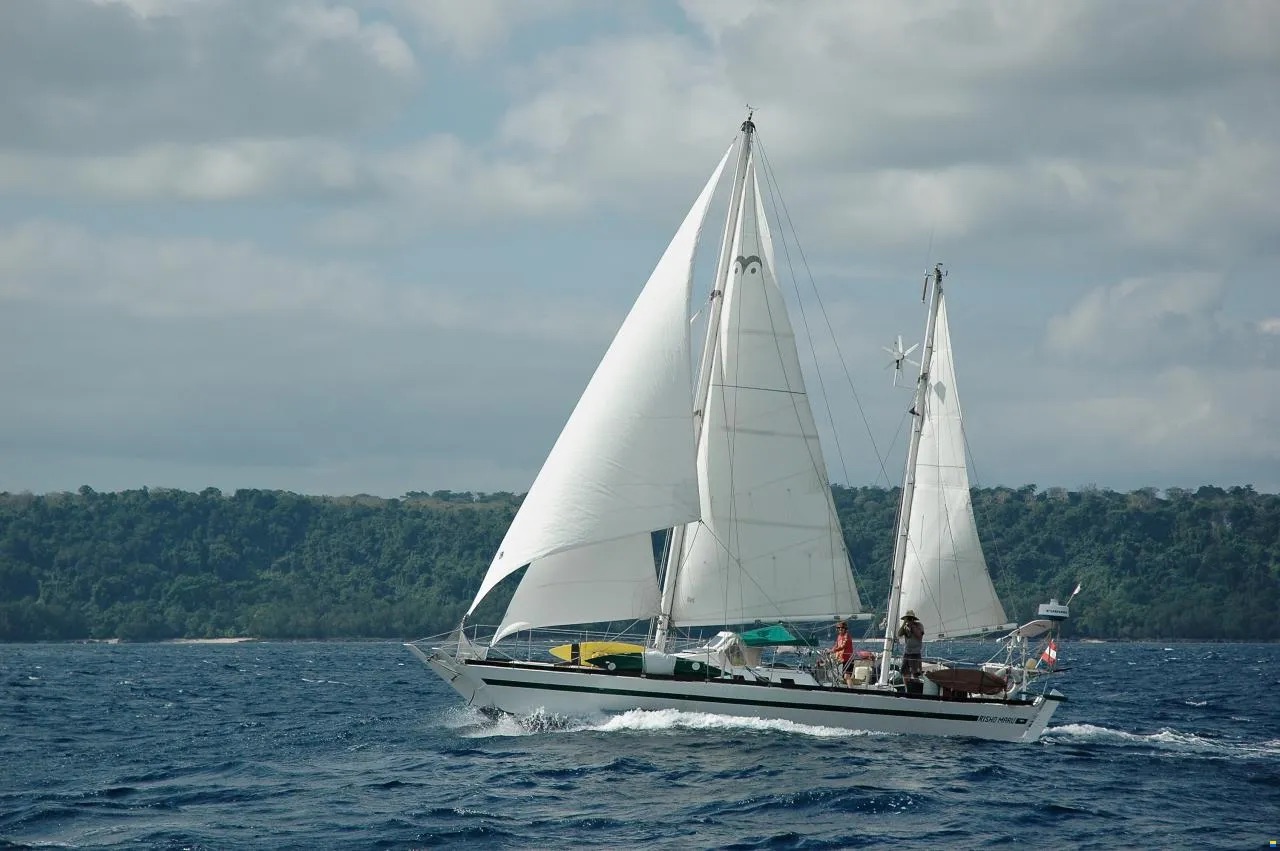 photo © Peter Schöler archive
photo © Peter Schöler archive
The RISHO MARU is a Narai MK IV class Wharram catamaran, designed by British designer and navigator James Wharram. The NARAI design is a direct descendant of the 40 ft RONGO on which James made his pioneering voyage across the North Atlantic in 1959. It is said that this type of catamaran attracts pioneering types.
Narai MK IV has become among builders and supporters of wharram design a term for a resilient family of ocean sailing ships suitable for long ocean voyages. The high stability of the vessel, achieved thanks to the low dimensions of the platform ensures that the ship will always take care of the crew, not the other way around.
As a family of four with the desire to invite other travelers on board for selected cruises, safety and comfort on long cruises is paramount for us, along with ease in maintenance and problem solving.
It should be borne in mind that multi-hull vessels are shape-stable vessels with a very long history. James Wharrram was inspired by the design of fantastic ancient Polynesian canoes in the Pacific Ocean that undertook long ocean voyages ahead of any other type of vessel.
This type of vessel reflects a deep respect for Polynesian navigation traditions that embody self-sufficiency, sustainability, adaptability, practicality and a deep connection with the natural world. These are values that are close to our own.
Built mostly of wood, plywood, epoxy and minimally fibre reinforced composite sheathing, the Risho Maru offers a sustainable alternative to mass-produced fiberglass ships. Its simple and robust design allows easy maintenance and long-term durability, making it an ideal vessel for long ocean voyages, research trips, a platform for learning, sharing and telling stories and enjoying the simple life of sailing.
RISHO MARU is also fully self-sufficient. All energy sources are collected using solar panels and wind power.
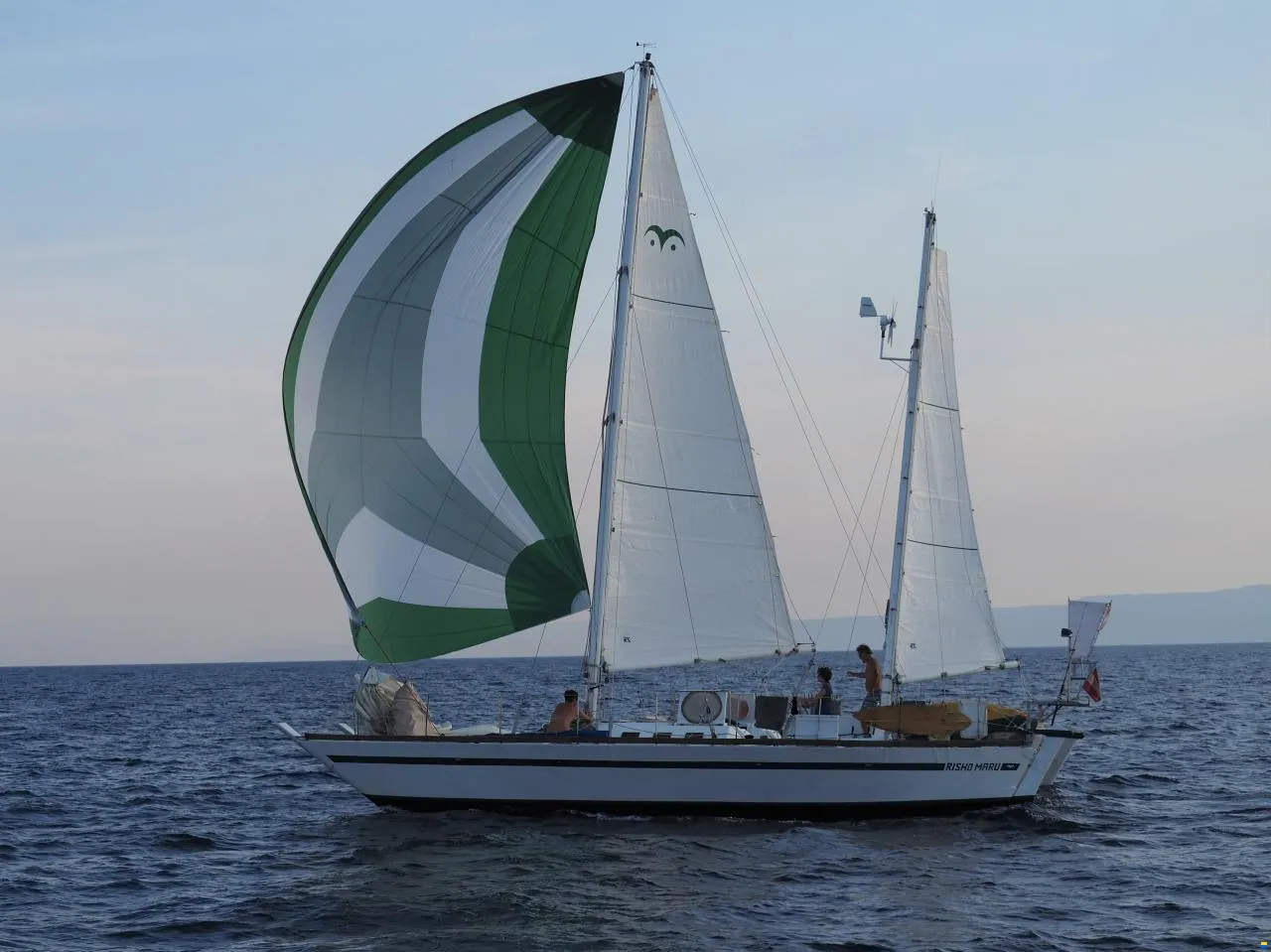 photo © Peter Schöler archive
photo © Peter Schöler archive
In the last 34 years, RISHO MARU has collected many stories. Between 2005-2009, she sailed around the world (29,000 nm) with the original owners Alexandra and Peter and their young son. Another 30,000 nm was sailed in the Mediterranean Sea.
Now RISHO MARU has returned to the Atlantic Ocean. Her home is the port on Pico Island in the town of Lajes do Pico in the Azores archipelago. From there she embarks on her adventurous voyages.
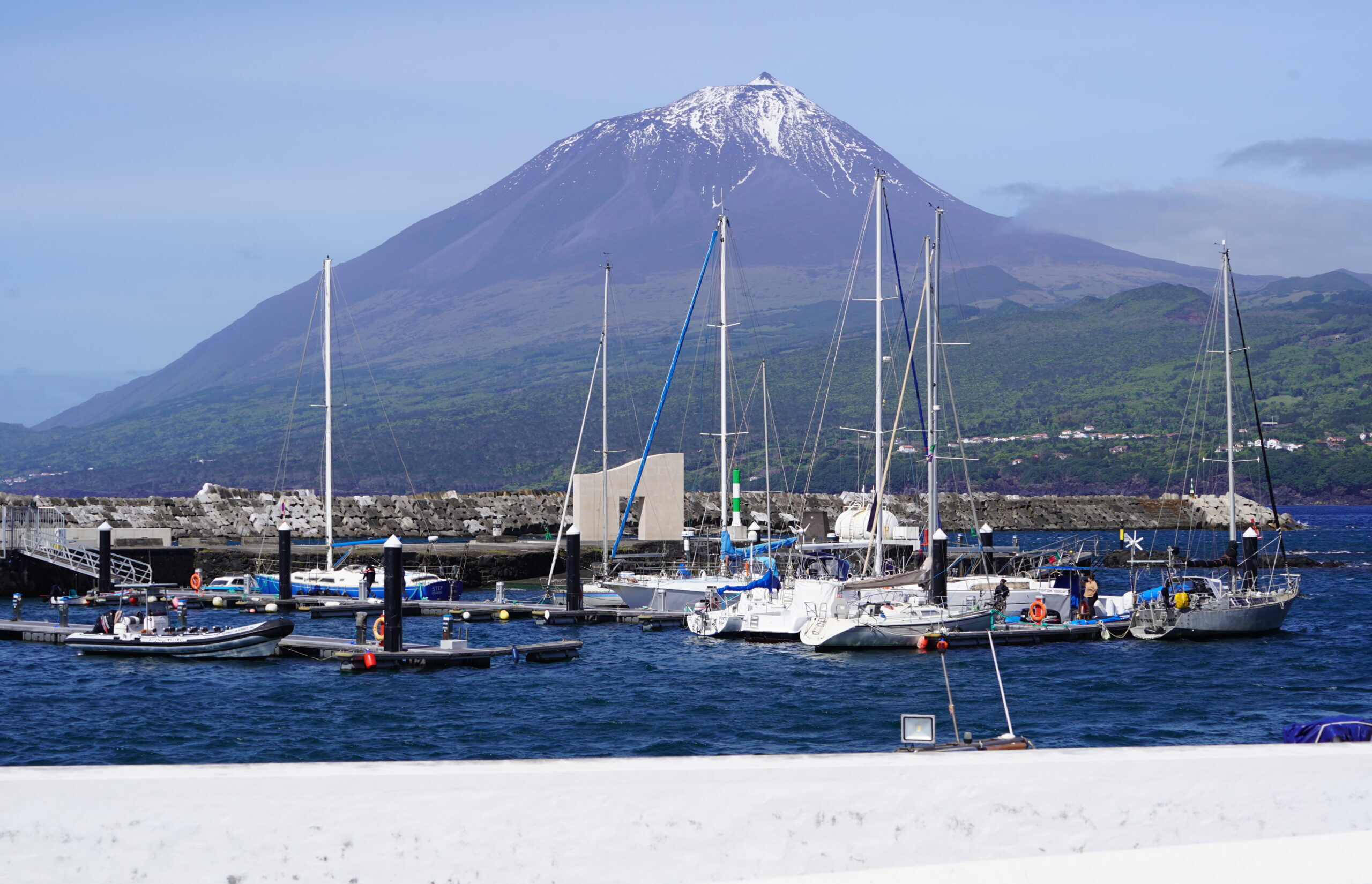 photo © Sea-Water Amplification (SWA) Lajes do Pico Atlantic Ocean Azores 2025
photo © Sea-Water Amplification (SWA) Lajes do Pico Atlantic Ocean Azores 2025
Story of RISHO MARU name
The original owner of the ship Franz had a wife, Hiroko, who was from Japan. They named their two children Ri and Sho. Maru hides behind the name of something beloved that needs to be protected. Many ships in Japan have this word attached to their name. Maru also means the circle that is so related to ships. The ship leaves the port, travels the world and then safely returns to its home port.
Specification and equipments:
Vessel type: Ketch catamaran
Type: Narai MK IV
Designer: James Wharram Design
Year of construction: 1984
Building Method: Ply, Timber, Epoxy – West system, Laminate
Lenght: 11, 80 m
Width: 6 m
Draft: 0, 7 m
Weight: 5500 kg
Sail area: 74 m2
CE Design Category: A – Ocean
No. of berths: 6
No. of bathrooms: 1
Fresh water tank: 260 l
Motor: Yanmar 27 hp outboard (Diesel), Evenrude 15 h (Petrol)
Dinghy: Tohatsu 9.8 hp outboard
Floor plan and photos:
1. Workshop 2. Bed 3. Seat 4. Navigation 5. Bed 6. Storage space 7. Sails 8. Bed 9. Seat 10. Kitchen 11. Cockpit 12. Bed 13.Toilet

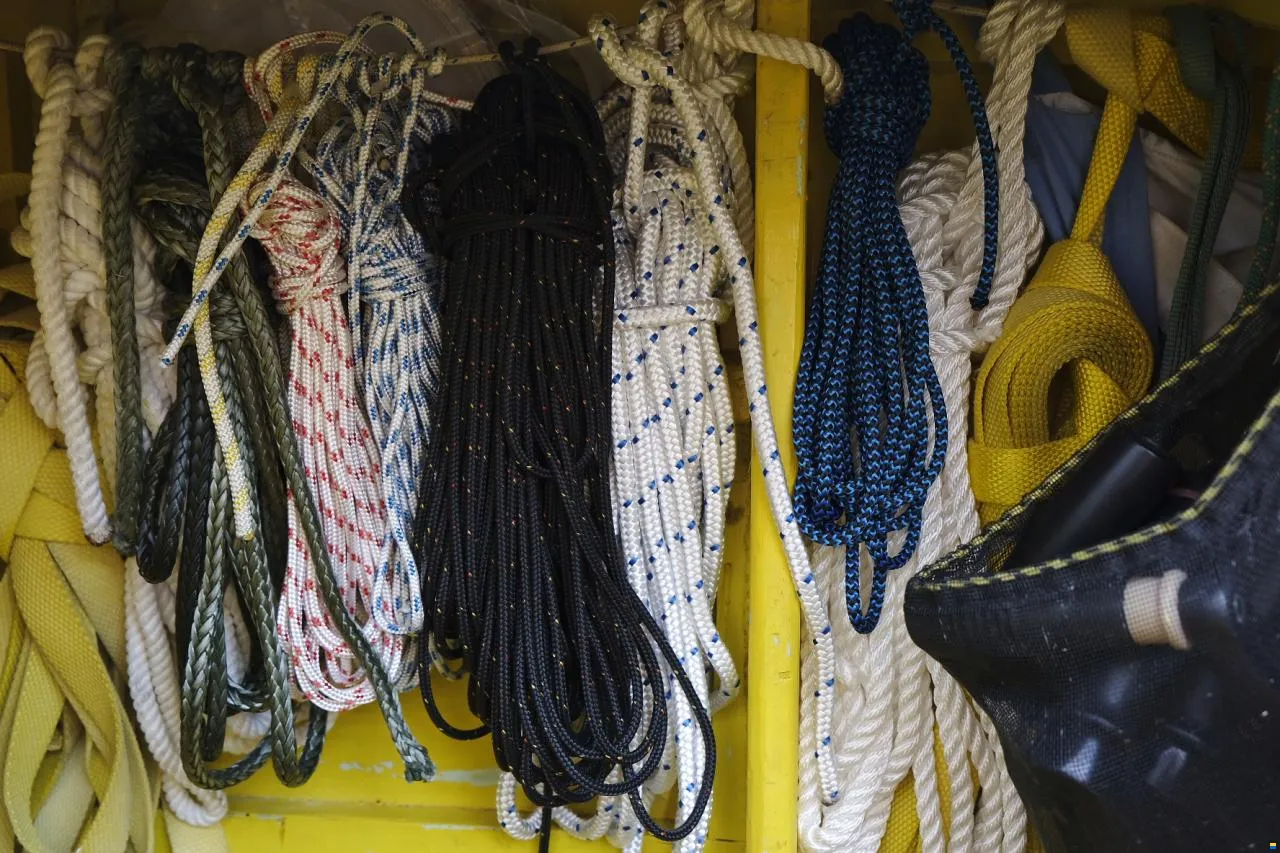
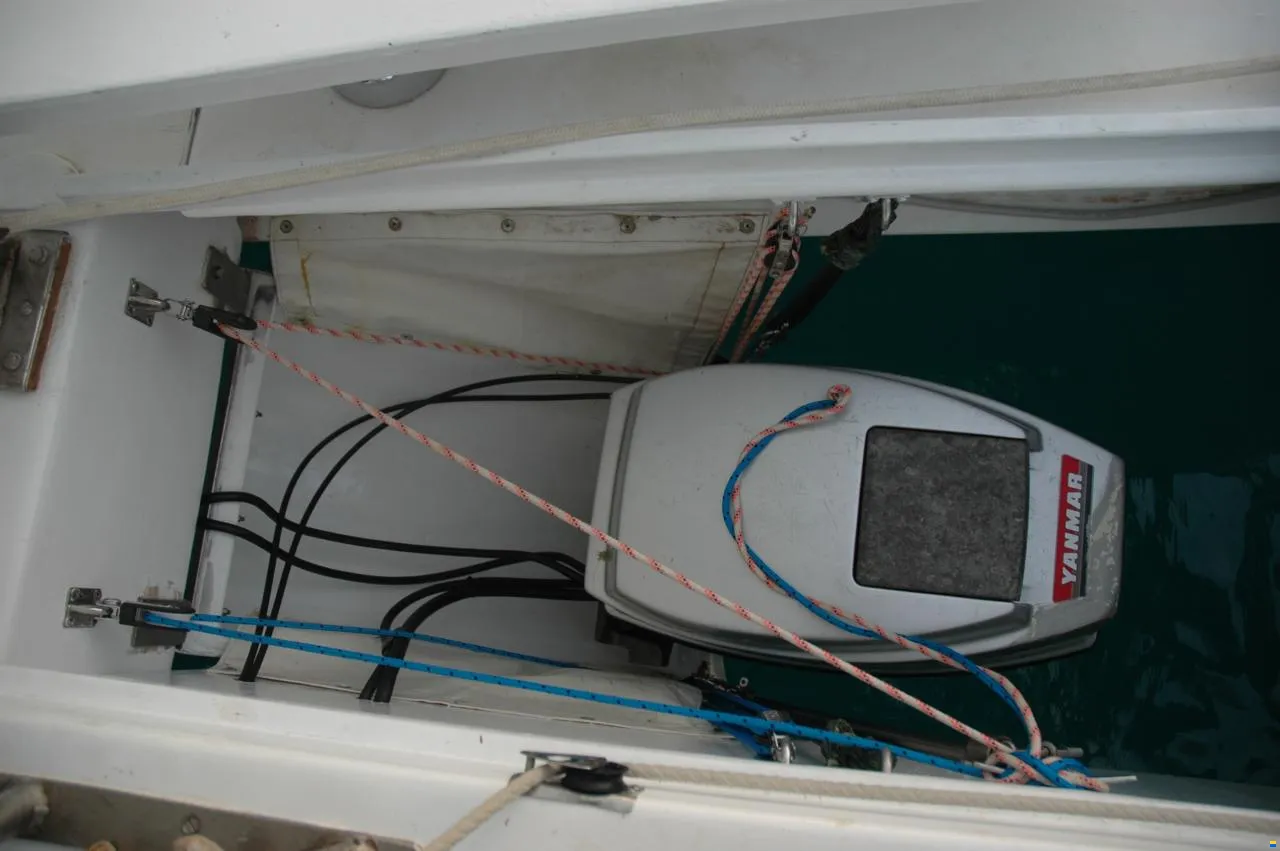
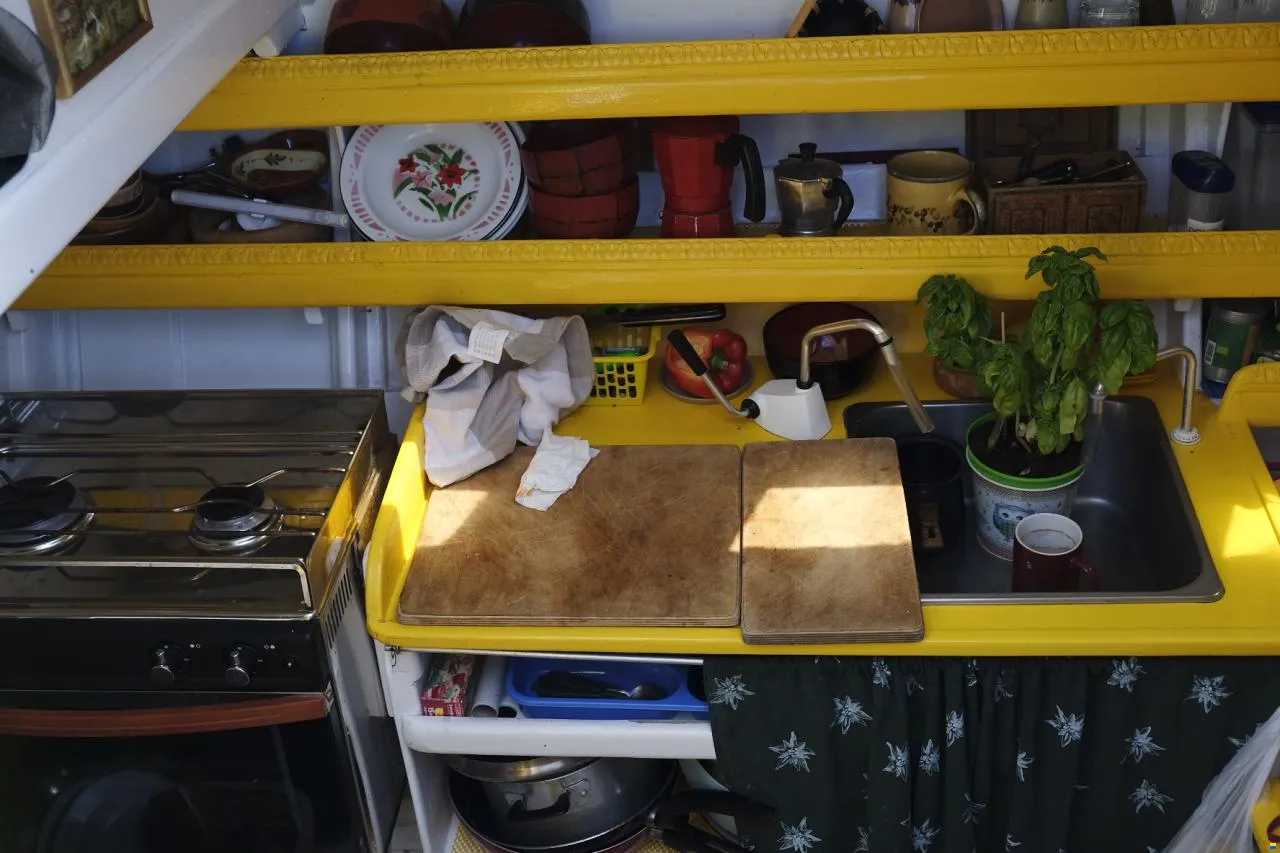

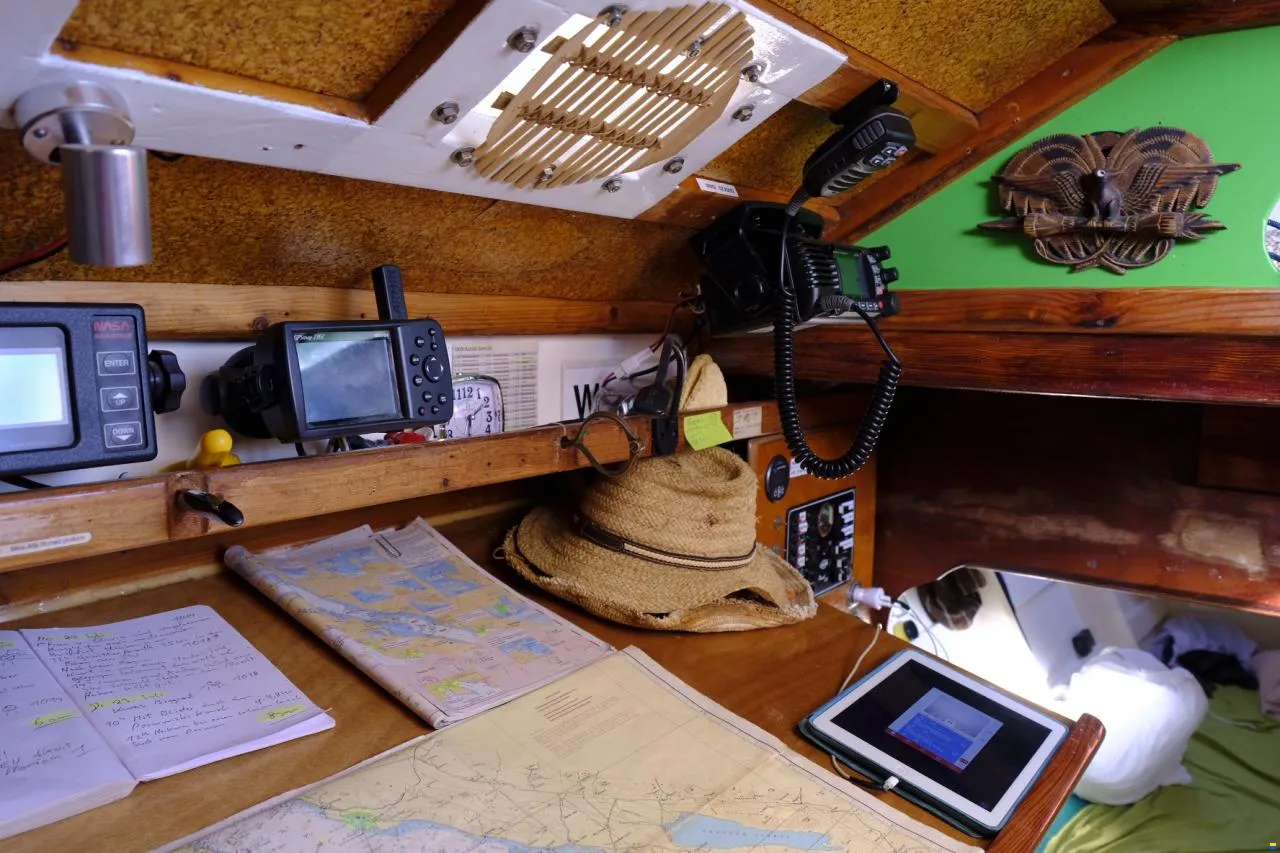
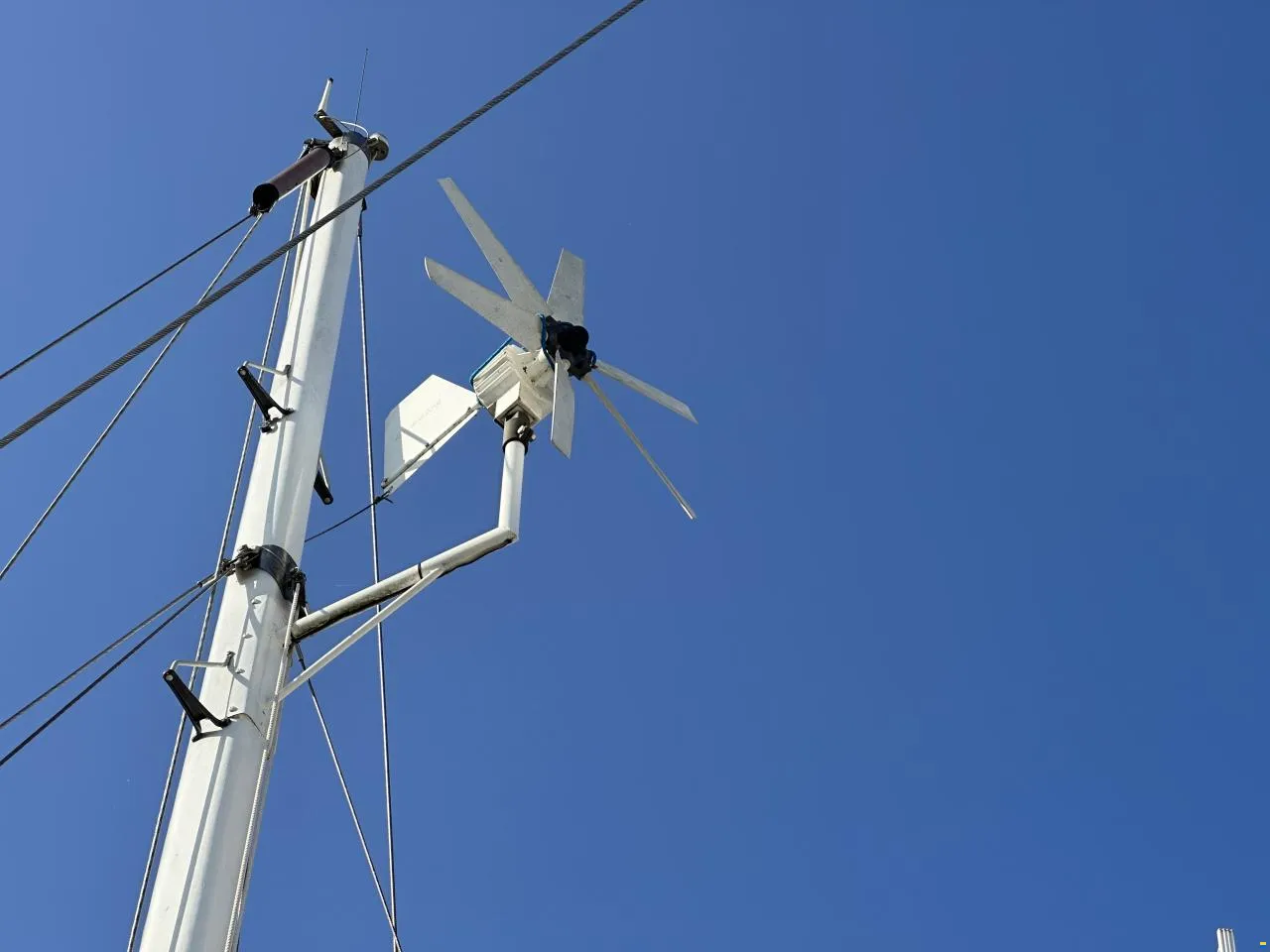

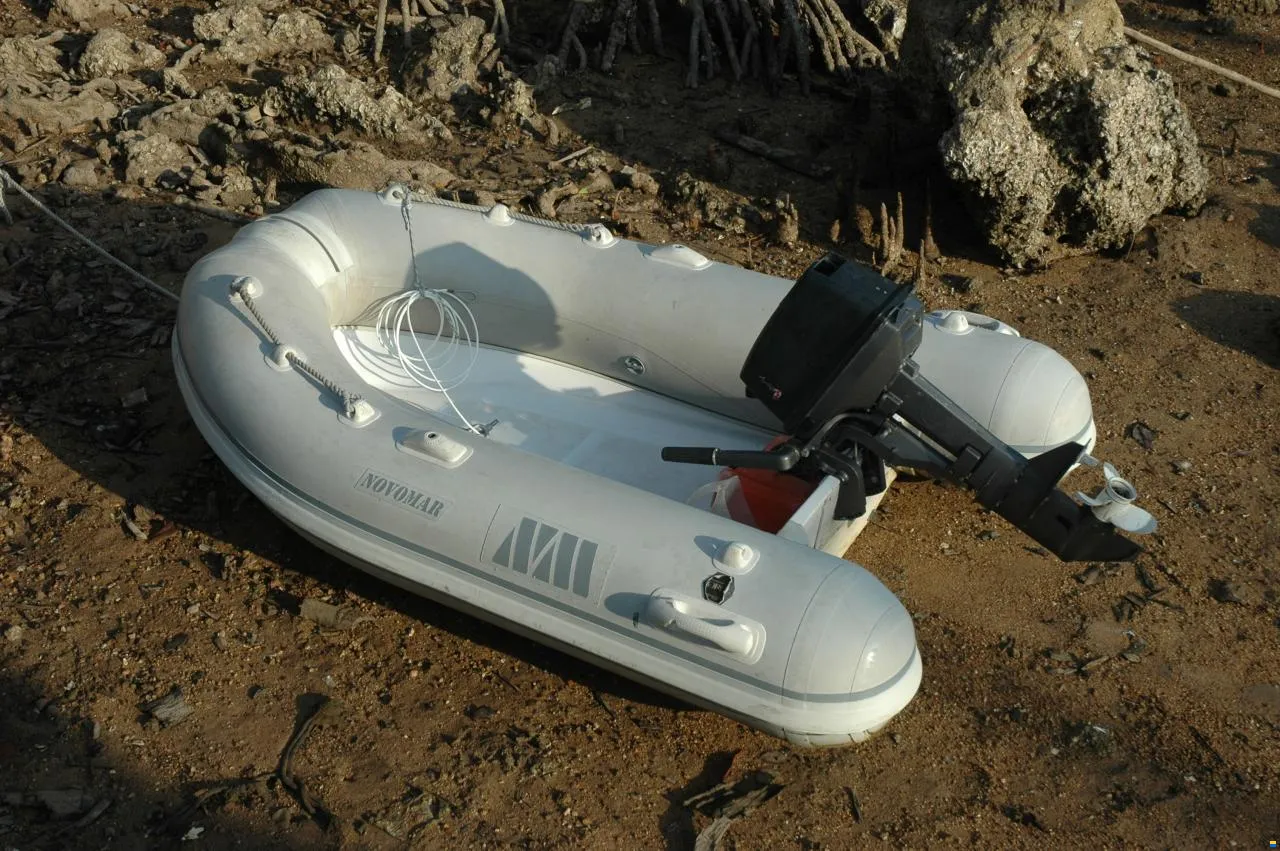 photo © Peter Schöler archive
photo © Peter Schöler archive